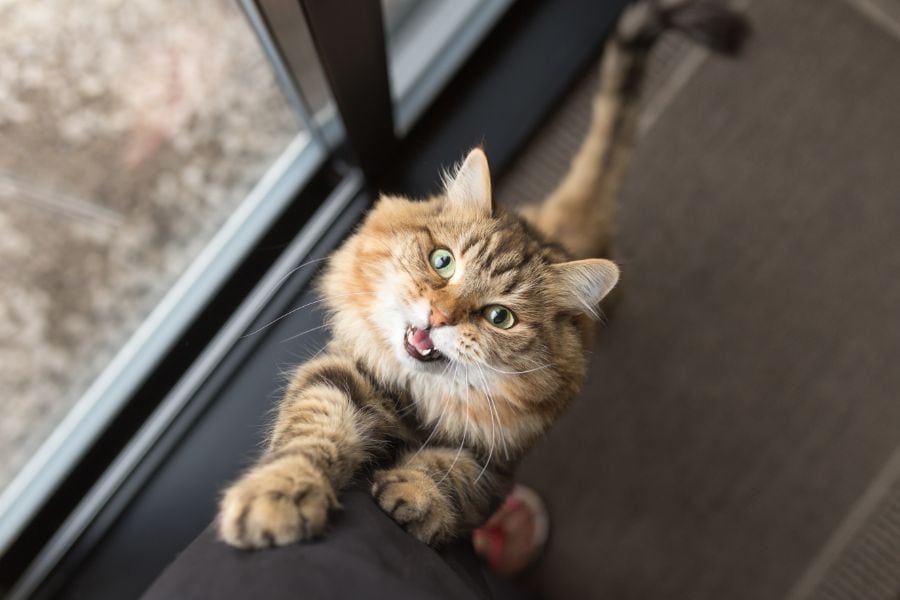Feline Facts: Cat Separation Anxiety In An Anxious Age

You’re packing a suitcase in preparation for a trip. Ordinarily, your cat might ignore or observe you from a distance, but in this moment the pink paws and twitchy whiskers are all over your clothes and toiletries. Sure, this could simply be a display of feline curiosity, but it could also mean that they know change is afoot.
Cats will stop at almost nothing to figure out how to get their lives back to normal. Cat separation anxiety can also be triggered by less obvious events, like a change in your (and their) daily schedule, and it can cause significant challenges for cats and their people alike.
Feel Good Attention
Some cats feel downright disturbed by their owner’s departures or changes in schedule, and show it by trying to block exits. Similarly, they may greet their person with absolute exuberance whenever they arrive home, no matter if it’s been 5 minutes or 5 hours.
The bottom line is, cat separation anxiety occurs when a deeply bonded feline fears their own solitude.
Despite Reassurance
If your cat follows you around the house, clings to your every move, and displays fearful behavior, you may need to address cat separation anxiety. Often, simply reassuring them that you’ll be back may serve to soothe them for the short term; but ultimately, long term solutions should be sought.
Know What to Look For
Beyond an obvious over-attachment to their owner (if there is such a thing!), the following symptoms are typically seen in cat separation anxiety:
- Increased vocalizations, including meowing, yowling, crying, etc.
- Disinterest in food
- Vomiting/diarrhea
- Urinating outside the litter box
- Destructive behavior, like scratching or clawing the furniture
- Excessive grooming behaviors
It isn’t yet known exactly why cat separation anxiety occurs, but genetics or environmental factors could trigger the behavior. It is important to note that without intervention, troubling symptoms can become worse over time.
It’s the Simple Things
Issues related to cat separation anxiety can be diminished with the right approach at home. However, before you move ahead, your cat should be examined and tested to rule out potential medical problems that may create similar symptoms.
Once we have the green light to proceed, you may find that your cat’s symptoms are eased through any of the following strategies:
- Try to stay as neutral as possible before you leave and when you return home. If you give in to your cat’s overexcitement, you may inadvertently reinforce the behavior.
- Give your cat lots of exercise opportunities. A tired cat is a happy cat.
- Provide a few safe food-puzzle toys to keep them busy in your absence. Be sure to reduce how much kibble you feed them at meal times.
- Keep their litter box immaculately clean.
- Always leave out fresh, cool water.
- Provide a window perch, cat tree, catio, or other safe structure for them to climb, explore, observe, nap and generally hang out in until you return.
- Use feline pheromone spray to mitigate any stressful or anxious feelings.
- Crate train your cat so they feel safe, secure and relaxed while you’re away.
- If you are going to be away from home for longer periods of time, hire a cat sitter or ask a friend to check in on your buddy.
Cat Separation Anxiety
If all else fails, and your cat is demonstrating more fear and stress, they may benefit from a behavioral specialist or prescription medication.
If you ever have questions about your cat’s health and happiness, please let us know. We’re always here for you at Beverly Hills Veterinary Associates.
